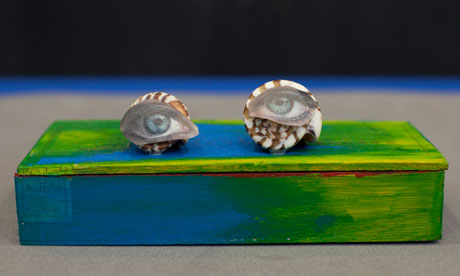
If you were to stumble on Brainboxes and Boundless Books at Hackney Museum in east London, the first thing that would strike you is the affinity between the artworks on display. For this dazzling, small-scale exhibition is the visual equivalent of a conversation. It has been curated by artist Shaun Caton, who runs art workshops for long-stay patients at Homerton hospital's neurological rehabilitation unit. It at one and the same time explores brain damage and seeks to transcend it. You will find almost no information about the artists themselves (patient confidentiality) – and the sense is that the art has come out of nowhere. In describing the challenges his artists were battling against, Caton lists a range of neurological conditions: Guillain-Barré syndrome, Parkinson's, strokes, brain trauma suffered in road accidents.
The show includes intimate and moving portraits as well as other ways of representing the self. Many patients have opted for making boxes which are potent metaphors for memory – receptacles filled with jewels, coral, birds, babies, a leaping dolphin. There are recycled books here too – decorated with haunting phrases (I loved the "how much longer envelope"). As I looked, it struck me that collage is the perfect art form for people suffering neurological damage because it works with the broken, reconstitutes it and makes it whole. Caton puts it like this: "The power of collage is the freedom of choice, the rebuilding of a story that may tell us something about the patients' lives. It may also reflect the fragmentary nature of their memories."
We talk also about one of the most elegant and lucid pieces on display, The Road to Recovery. The drawing of Homerton hospital looks like something out of Laurent de Brunhoff's Babar books. "It describes a maze with many ways in – but only one way out," Caton observes. But the exhibition gently disagrees. Its uplifting suggestion is that there are many ways out and through. Until 18 September, Hackney Museum, London E8

